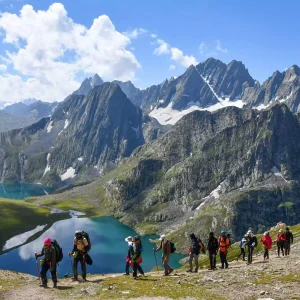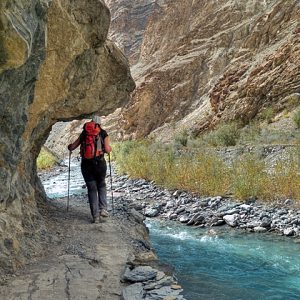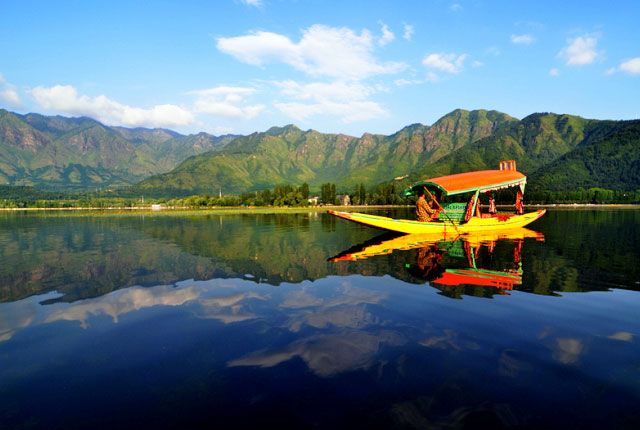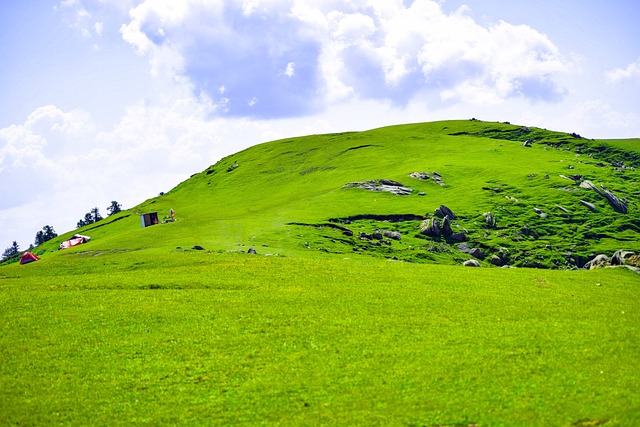
How to Prepare for a Trek
Table of Contents
ToggleOverview
Trekking is one of the most thrilling outdoor activities through which people experience the nature while challenging their physical body. Seeing the world in a very diverse yet fulfilling way, by trekking through luxuriant forests, scaling towering peaks, or crossing alpine meadows; such adventure calls for preparation to ensure that one has a safe and enjoyable adventure.
In this detailed guide, we are going to cover all things that one needs to do in order to prepare for a trek, starting from the research phase until what happens after the trek has been completed. In this guide, we are going to provide proper advice and tricks, together with necessary information that is going to smooth out the planning process.





1. Research the Trekking Destination
Why Research is Important
Any trek requires research before the journey is undertaken. Different types of treks vary in level difficulties, environmental conditions, and risks. The more you define your destination, the better prepared you will be.
Some of the things to consider when researching your trek:
- Trek Difficulty and Duration: It may take a day long trek or several days long. Know how difficult and how long the trail is. Are you prepared for long, steep ascents or gentler, shorter trails?
- Weather and Climate: Know average conditions you would be faced with on the tour. Be prepared with everything because, of course, it will definitely rain or be bloody freezing. Is it a sweltering heat, cold as blistering snow or some decent rain?
- Altitude and Acclimatization Requirements: Some treks are at altitude. Requirements for this sort of treks will come with requirement for several days acclimatization and consciousness about high altitude sickness.
- Trail Accessibility and Conditions: Some trekking routes are set up properly and often cleaned up while others are rugged or worse, accessible only with difficulties. The following known hazards on trails are rocky pathways, rivers, and sections prone to landslide.
- Safety and Permissions: In some areas, trekking requires safety measurements and has to get registered/ permit. Some research legal demands from the destination and obtains their entire permissions before they undertake trekking.
Use of Proper Resources
The internet, therefore, will give trekkers a wonderful treasure trove of information. Websites, blogs, online forums, and even dedicated social media groups give first-hand accounts, trail reviews, and advice from fellow adventurers. Use these resources to get an honest picture of what to expect from your trek.
2. Choosing the Right Trekking Gear
The Importance of Quality Trekking Gear
Having the right gear is essential for comfort and safety during your trek. Whether you’re going on a short day hike or a multi-day adventure, your gear needs to be functional, durable, and suitable for the specific conditions of your trek.
Core Trekking Gear You’ll Need:
- Backpack: A proper trekking backpack is one of the foremost items. A changeable strap, a padded waist belt, and stuff sacks or compartments are also integrated. A daypack of 20-30 liters is often adequate for a short trek; more extensive pack capacity of 40-60 liters accompanies longer trips.
- Footwears are absolutely without compromise. One has to opt for trekking boots that offer sufficient ankle support, waterproof, and a slip-proof bottom. Break in the trekking boot before taking up the trek as pain in the blister might really prove to be unbearable.
- Clothing: Layers, layers, and more layers are the way for trekking clothing. Moisture-wicking underlayers to keep sweat away from your body, insulating layers such as fleece or down jackets for warmth, and finally put it all together with a breathable waterproof outer shell to give you protection from rain and wind. And, never forget your warm hat, gloves, and neck gaiter for chilly conditions.
- Hydration System: Hydrate. Carry a water bottle or hydration bladder so that water is always available to drink during the hike. If it is a long trek, a set of water purification tablets or a filter will also allow safe drinking at stops.
- Trekking Poles: Helpful for maintaining balance and not straining knees on a steeper slope or uneven ground.
- Sleeping Bag and Tent: One never knows, carry a small tent that is light in weight and weather-resistant, along with a sleeping bag which must be warm enough for the temperature you anticipate.
- Cooking Gear Portable Stove, lightweight cookware and fuel if one intends to cook on his or her trek. Utensils are not out of place either.
Other Accessories Specific to Your Needs:
- Sunglasses and Sunscreen: Eye and skin protection from sun rays. Sunglasses should contain UV protection and sunscreen preferably of high SPF for increased sun exposure.
- Headlamp or Flashlight: An indispensable component, especially when walking very early in the morning or late in the evening. There’s a rechargeable headlamp that comes with spare batteries that can be carried along.
- First Aid Kit: Always carry your first aid kit well-stocked. Include all bandages, antiseptic, pain relievers, blister treatments, and prescription medication that you might require.
- Power Bank: Carry a portable power bank to charge your phone or camera. In fact, for long treks, solar-powered chargers work best because they are environmental friendly too.
3. Physique Preparation for the Trek
Preparation for a Trek
One should be fit when trekking. The more prepared the body, the more it will enjoy itself. Your preparation should be on endurance, strength, flexibility, and stamina.
Pre-Trek Training for Trekker:
- Cardio Exercise: Hiking requires a strong cardiovascular base. Condition yourself to hike by jogging or running, brisk walking, cycling and swimming in order to increase your heart and lung capacity. Condition for 30-60 minutes, three to five times a week.
- Strength Training: Strengthen your legs, core, and upper body. You will climb hills and run over rough terrain with strong legs. A strong core and upper body will help you balance and carry your backpack. Squats, lunges, step-ups, and planks are the best exercises to help build strength.
- Stair Climbing and Hill Walking: Training on stairs or uphill hiking builds muscle endurance for steep ascents, which are quite common on many treks.
- Flexibility and Mobility: Yoga and stretching exercises help one have flexibility and avoid cramps and stiffness. Stretch your hamstrings, calves, quads, and lower back.
- Backpacking Practice: If possible, practice hiking with a loaded backpack. Gradually increase the weight to simulate the load you’ll carry during the trek.
Tapering Before the Trek
The week leading up to your trek, decrease the intensity of your workouts and get plenty of rest. This ensures that your body is fresh and ready for the physical demands of the trek.
4. Nutrition and Hydration for Trekkers
Fueling Your Body for the Trek
Proper nutrition is a requirement to gain energy during the entire time of your adventure. Well-balanced nutritional intake would keep you with stamina, endurance and stamina while good water intake avoids dehydration and accelerates the speed in healing.
Pre-Hike Nutrition
- Carbohydrates: The day before trekking, eat more carbohydrates. A few slow-releasing energy complex carbohydrates consist of grains, pasta, rice, and oatmeal.
- Protein: Adequate protein will aid in muscle reconstruction and healing; work to acquire sufficient quantities from the list-lean meats, legumes, tofu, and dairy products
- Healthy fats: on trail, best sources for omega-3s as well as healthy fats will come from nuts, seeds, as well as avocados
- Hydration: Hydrate before leaving for trek attempt. In the days leading up to your trek, drink at least 2-3 liters a day
On Trek Nutrition
- Snacks: Pack lightweight, high-energy foods, such as energy bars, trail mix, jerky and dried fruits. These keep you going throughout the entire hike without adding too much to your pack load.
- Food: On those long hikes, freeze-dried foods are light, healthy, and very easy to prepare over a pot of hot water. Ensure that they are light, healthy, and easy to prepare.
- Water: Drink much during the day to avoid dehydration. Although poor hydration intake may not impair performance, it can certainly affect your mood and energy levels.
- Electrolyte Replenishes: Depending upon the extent of treks, you will most probably have to replenish the lost electrolytes. You may carry electrolyte tablets or powder that you can dissolve in water.
5. Psychological Preparations for the Trek
Trekking is as much a test mentally as it is physically outside the body. It is tenacity to continue moving forward when it gets tough, to endure pain and maintain focus on the goal that makes trekking success rather than failure.
Mental Tips for Trekkers:
- Set Realistic Expectations: Trekking is challenging in every sense. It might turn out to be more demanding than one expects it to be, but enjoy the moment, not just the beauty at the destination.
- Stay Positive: One can work through trying moments when one is positive. Focus on the beauty surrounding you, the progress you are making, and the sense of accomplishment.
- Break up the Hike: Do not see the whole trail. Just see how to get to a landmark or check point.
- Mindfulness: Keep aware of your surroundings, breath, and body. It may help take your mind off the pain and keep it calm and focused.
6. Safety during the trek
Safety should always be on top of your list while trekking. Be it the well-known trails or the unknown remote paths, proper preparation can help avoid accidents and emergencies.
Important Safety Tips:
Tell Someone Your Plans: Inform a friend or family member about your trek itinerary, including your route, expected return time, and emergency contacts.
- Know your route: Carry a map and compass or a GPS device to navigate. But do not rely solely on your phone as a GPS because that has limited battery life.
- Stay on marked trails: Always maintain the designated paths so as not to get lost, and definitely not into an unsafe area.
- Know Local Wildlife and Hazards: Know if there are any bears or snakes in the region and what to do if you encounter them.
- Weather Awareness: Check the weather before you go out. Prepare yourself to have changed weather at anytime and carry extra clothing or rain gear always.
7. Environmental Stewardship
Responsible trekking is both for your safety and saving the environment for the next generation of adventure seekers. Minimize your footprint in the environment using Leave No Trace principles.
Key Leave No Trace Principles
- Pack Out Everything: No trace should be left behind. Bring out all litter, wrappers of food, and even organic garbage like peels of fruits.
- Stay on Trails: Always follow the set trails that will not harm the soil erosion and gently disturb the ecosystems.
- Distance from Wildlife: Never bother or feed the wildlife.
- Camp Sites Responsibly: Use already set camp sites and do not make new ones; leave it cleaner than how you found it.
8. Recovery after Trek Resting and Rebounding after a Trek
Recovery after a trek is very important to get your body healing muscles and reducing fatigue. The better your recovery routine, the more refreshed and prepared you’ll be for the next adventure.
Some tips for recovery:
- Hydration and Refueling: Drink in water and consume nutritious meals so that you keep putting back into your energy stores.
- Stretching: Gentle stretches loosen tight muscles and increase flexibility.
- Rest: Allow your body to rest by giving it quality sleep and rest.
- Massage or Foam Rolling: This exercise helps to end the soreness and tension of the muscles.
Conclusion
This requires careful planning that necessitates someone to be in good physical condition, mentally strong, and committed to safety as well as responsibility toward the environment. Once all the right gear, knowledge, and training find their way, then one can set out on their trekking adventure ensuring that they have done all it takes to ensure a successful and memorable experience.
As important the route may be-bewhether it is a beginner-friendly route or exciting and demanding of high altitude trek-the energy you put into prep pay itself well when you take a very first stride on the trail, of course, well, lace up, gather your gear, pack to go!
People Also Ask
How do I prepare for a trek?
To prepare for a trek, focus on physical fitness, gather the necessary gear, plan your route, pack essentials, and mentally prepare for the challenges of trekking.
What fitness level do I need for a trek?
Your fitness level should align with the difficulty of the trek. For easy treks, moderate fitness is sufficient, while challenging treks may require endurance and strength training.
How should I train for a trek?
Training for a trek involves cardio exercises (running, cycling), strength training (leg workouts), and endurance training (hiking with a loaded backpack) to simulate trekking conditions.
What should I pack for a trek?
Essentials for a trek include sturdy hiking boots, clothing layers (base layer, insulation, outer layer), a backpack, water bottles, food, trekking poles, and a first aid kit.
What clothing should I wear on a trek?
Wear moisture-wicking clothes, breathable layers, waterproof jackets, and durable trekking pants. Avoid cotton, as it traps moisture and can cause chafing.
How do I choose the right trekking shoes?
Choose trekking shoes that are comfortable, durable, and provide ankle support. Ensure they are waterproof and have a good grip, especially for rocky and slippery terrain.
What is altitude sickness, and how can I prevent it?
Altitude sickness occurs due to lower oxygen levels at high altitudes. Prevent it by acclimatizing slowly, staying hydrated, and avoiding overexertion.
What food should I carry on a trek?
Carry lightweight, energy-dense foods like trail mix, energy bars, nuts, dried fruits, and ready-to-eat meals. Also, pack easy-to-make hot meals like soup or pasta.
How much water should I carry on a trek?
Carry enough water to stay hydrated, typically 2-3 liters per day, depending on the trek’s difficulty and the weather. Consider carrying a water filter or purification tablets.
How do I plan my trekking route?
Research your destination, check trail difficulty, weather conditions, and the duration of the trek. Use maps, guides, or apps to get accurate route details and plan for stops.
How do I prevent blisters during a trek?
Prevent blisters by wearing well-fitted shoes, using moisture-wicking socks, and applying blister prevention tape or Vaseline on high-friction areas.
What should I know about trekking in extreme weather conditions?
Trekking in extreme weather requires preparing for the specific conditions (rain, snow, heat). Carry appropriate clothing, gear, and emergency supplies. Always check weather forecasts in advance.
Should I carry a first aid kit on a trek?
Yes, a first aid kit is essential for handling injuries, cuts, blisters, and other minor health issues. Include bandages, antiseptic wipes, pain relievers, and medications.
How can I avoid injury while trekking?
To avoid injuries, warm up before starting, take frequent breaks, listen to your body, and use proper trekking techniques. Stretch your muscles regularly to stay flexible.
How do I stay motivated during a tough trek?
Set small goals, focus on the scenery, take breaks, and remind yourself of the rewards at the end. Trekking with friends or a group can also help keep motivation high.
Should I trek solo or in a group?
Trekking in a group is generally safer, especially for beginners, as you can share responsibilities and support each other. Solo trekking can be more challenging but offers solitude and independence.
How do I deal with physical exhaustion during a trek?
Take regular breaks, drink water, eat high-energy foods, and maintain a steady pace. If feeling overly fatigued, rest until you regain energy.
What are the key factors to consider before a trek?
Before trekking, consider the trail’s difficulty, weather conditions, required permits, available water sources, accommodation, and your physical preparedness.
How do I protect my skin during a trek?
Wear sunscreen, especially at high altitudes, to protect your skin from UV rays. Use lip balm with SPF and wear a hat to prevent sunburns.
What should I know about trekking poles?
Trekking poles help reduce pressure on your joints, improve balance, and provide support on rough terrain. Choose adjustable, lightweight poles for convenience.
How do I pack my backpack for a trek?
Pack heavier items at the bottom, with lighter items on top. Keep essentials like snacks, water, and a first aid kit in easily accessible compartments.
Should I get travel insurance for trekking?
Yes, travel insurance that covers trekking-related activities and emergencies is highly recommended, especially for longer or high-altitude treks.
How do I acclimatize to high altitudes?
Acclimatization involves ascending slowly, allowing your body to adjust to lower oxygen levels. Take rest days, hydrate well, and avoid overexertion to prevent altitude sickness.
What should I do if I get lost on a trek?
Stay calm, stop moving to avoid further disorientation, and retrace your steps if possible. Use a compass or GPS device to find your way back, and signal for help if needed.
How do I know if I’m ready for a trek?
You are ready for a trek if you have prepared physically and mentally, have the appropriate gear, and have researched the trail. Start with easier treks to build confidence and experience.





the best part of our Kashmir tour? The variety of activities! We went river rafting in Pahalgam, visited apple orchards, and even had a traditional Kashmiri meal with a local family. Thanks to Golden Wheels, we felt like we truly lived in Kashmir!
Our family group of 12 had an amazing trip to Kashmir! The best thing was the coordination and seamless transportation by Golden Wheels. Would 100% book again!
Golden Wheels planned an itinerary full of fun and culture. We tried paragliding in Aru, explored historic Mughal Gardens, and shopped for authentic Kashmiri handicrafts. Every day was a new adventure!